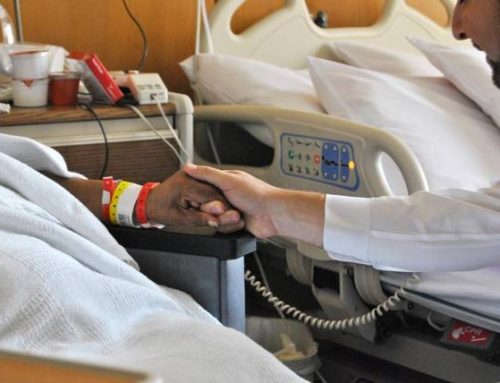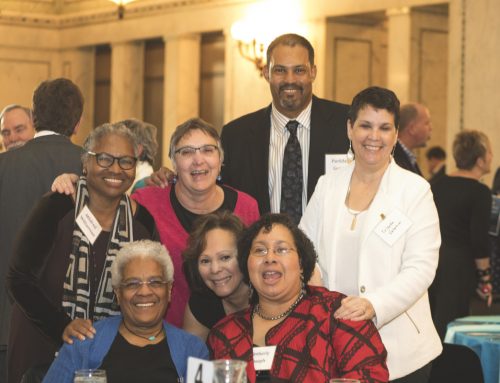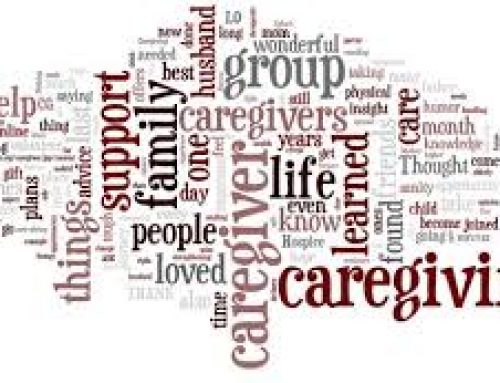On Ash Wednesday, I walk my unit at Rush Hospital in my lab coat, my right hand slowly turning gray as I smudge ash onto foreheads and sanitize between rooms. I go to the room of Claudia,* who told me yesterday that she has decided to stop chemotherapy. She is tired and ready to go home to God. Her face lights up when I enter with a small jar of ashes. I place the sign of the cross on her forehead with one hand as she squeezes my other hand in hers. “Remember that you are dust, and to dust you shall return.” She is tearful and squeezes my hand more tightly. “Thank you, thank you, thank you,” she whispers.
 My first experience of Ash Wednesday occurred while I was working as a hospital chaplain completing my first unit of CPE. Clinical Pastoral Education (CPE) is an interfaith, professional training program that trains students in providing pastoral care, using both immersion in patient care and supervision and reflection with supervisors and peers. As part of my intern year with Bishop Anderson House, completing a unit of CPE training was an incredible way to deepen and strengthen my practice as a caregiver and to continue vocational discernment. Over the past three months, my ability to connect with others deepened, my insight into my own mind and heart intensified, and my experience of the sacred expanded.
My first experience of Ash Wednesday occurred while I was working as a hospital chaplain completing my first unit of CPE. Clinical Pastoral Education (CPE) is an interfaith, professional training program that trains students in providing pastoral care, using both immersion in patient care and supervision and reflection with supervisors and peers. As part of my intern year with Bishop Anderson House, completing a unit of CPE training was an incredible way to deepen and strengthen my practice as a caregiver and to continue vocational discernment. Over the past three months, my ability to connect with others deepened, my insight into my own mind and heart intensified, and my experience of the sacred expanded.
As a lifelong Buddhist serving with the Episcopal Service Corps (Julian Year) and living in Christian community, my spiritual life closely involves interfaith connection. At the hospital, I met with people of all faiths and no faith. Sometimes people spoke with me about God or the sacred and sometimes they didn’t. During the 400 hours of my CPE unit, I performed my first baptism, gave communion, imposed ashes, ceremonially cleansed rooms, blessed patients, and prepared a body for death. Incense was exchanged for hand sanitizer and the smell of sickness, bells for vital sign monitors, and prayer books for electronic charting.
As chaplains, we accompany patients through despair and through hope, through pain and through relief. We are charged to fully receive each story with care and acceptance. In CPE our textbooks were “Living Human Documents:” the living, breathing, changing stories of both our patients and ourselves. For me, the core of both caregiving and of learning is deep, compassionate listening. This requires completely and authentically “showing up” to another person. My own faith tradition speaks of our profound connectedness as human beings, of the reality of suffering, and of the imperative to treat all beings with compassion. This foundation is a large part of what brought me to chaplaincy and to Bishop Anderson House; it has provided me with a language through which to experience caregiving as a spiritual practice. From my patients and from my peers, I learned about God, about Grace, about Love, and about what it means to be human and to exist in extremes of both pain and joy.

At the heart of providing spiritual care is something deeply, universally human. Patients are not only patients; they are mothers, sons, husbands, friends, co-workers. They have stories and histories and needs that are physical, spiritual, emotional, and personal. There were extraordinary moments – like baptisms and Ash Wednesday – and ordinary moments – like times I sat with patients as they flipped through TV channels. So often, it was my patients who showed me that the divine was already in the room. They constantly taught me about faith, about suffering, and about resiliency. While I was there to give them spiritual and emotional support, I often felt as I walked away like I had received so much more than I could ever hope to give. Over and over and over again, I experienced sacred, powerful connections, which revealed that despite, or perhaps because of, our brokenness, we are fundamentally, beautifully whole.
*Name changed.






Leave A Comment